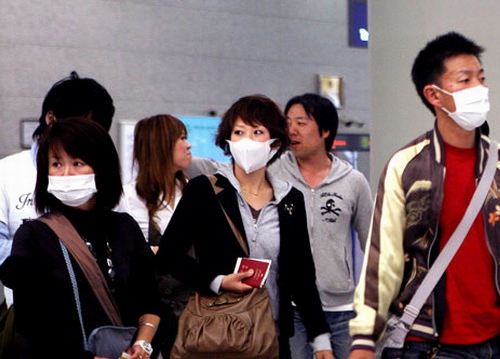
Scientists now estimate that about 280,000 people died in the flu pandemic that swept the globe in 2009 and 2010, more than 15 times the toll that had been officially recorded by laboratory tests of victims.
科学家现在估计,约有28万人死于2009年和2010年那场席卷全球的流感疫情,是经实验室检测确定的官方统计死亡人数的15倍还多。
The big increase in estimated deaths from the H1N1 virus isn't a surprise, experts said. In any pandemic, the initial count typically is based on lab-confirmed figures that tend to significantly underestimate the true number of fatalities. In the case of the H1N1 pandemic, there were 18,500 lab-confirmed deaths, while a more comprehensive estimate suggests that anywhere from 151,700 to 575,400 people may have died. The 280,000 figure is a rough median estimate for that range.
专家们说,他们对于死于H1N1病毒的估测死亡人数大幅增加并不意外。任何一种流行病的初始统计一般都以实验室确定的数据为基础,而实验室数据往往明显低于实际死亡人数。拿这场H1N1流感来说,实验室证实的死亡病例为18,500例,而一项更全面的估算显示,死于该流感的人数可能在151,700人至575,400人之间。28万是这一估算的粗略中值。
The new study, published in the Lancet, is the first effort to calculate the global impact of the H1N1 virus, known at the time as swine flu. The contagion was triggered by a recombination of bird, pig and human viruses and was the first flu pandemic of the 21st century. The pandemic officially ran from June 2009 to August 2010.
新近发表在医学杂志《柳叶刀》(Lancet)上的一份研究报告是估测这场H1N1流感(当时也被称作“猪流感”)全球影响的首次尝试。该疫情在禽类、猪和人类的病毒基因相互结合后产生,也是21世纪的首次大流感,官方资料显示它持续的时间为2009年6月至2010年8月。
H1N1 caused havoc around the world, sickening or killing hundreds of thousands of people. It prompted several national public-health emergencies and pushed countries to stockpile vast quantities of vaccine and antiviral drugs.
H1N1流感在全世界造成了严重破坏,数十万人因此致病或死亡。受其影响,好几个国家启动了全国性公共卫生应急机制,很多国家不得不储备大量疫苗和抗病毒药物。
The latest research confirmed earlier observations that 80% of the pandemic deaths occurred in people younger than 65 years old. About 30% of the victims in that age group were healthy with no underlying risk factors. That is a marked difference from seasonal flu, which mainly claims the elderly and the frail.
这项最新研究证实了先前的观察报告,即在H1N1流感的死亡病例中,有80%都不到65岁,而这一年龄段中的死者又有约30%生前身体健康,没有潜在疾患。这是与季节性流感明显不同的一点。季节性流感主要夺去的是年迈体衰者的生命。
The study also found that nearly 60% of the fatalities were likely to have occurred in Southeast Asia and Africa, home to 38% of the global population. The highest mortality rates were in Africa, which suffers from a poor health infrastructure and lack of trained medical personnel.
研究还发现,近60%的死亡病例可能出现在东南亚和非洲,这两地的人口占全球总人口的38%。其中,非洲的死亡率最高,那里医疗设施薄弱,缺乏训练有素的医务人员。
"The number of deaths is not the only thing to look at in assessing the impact, but the huge loss of human potential," said Fatimah Dawood, an epidemiologist and pediatrician at the U.S. Centers for Disease Control and Prevention in Atlanta, who was lead author of the paper. Because of the many younger H1N1 victims, she added, "more than three times the number of years [of life] were lost than are lost in a seasonal flu epidemic."
美国疾病控制与预防中心(U.S. Centers for Disease Control and Prevention)的流行病学家兼儿科医生达伍德(Fatimah Dawood)说,死亡人数不是评估疫情影响时唯一要关注的因素,还要看到疫情给人类潜力造成的巨大损失。达伍德是这份研究报告的主要作者。她说,H1N1流感导致很多较年轻的人死亡,这一流感夺去的人类寿命是季节性流感所夺去人类寿命的三倍还多。


